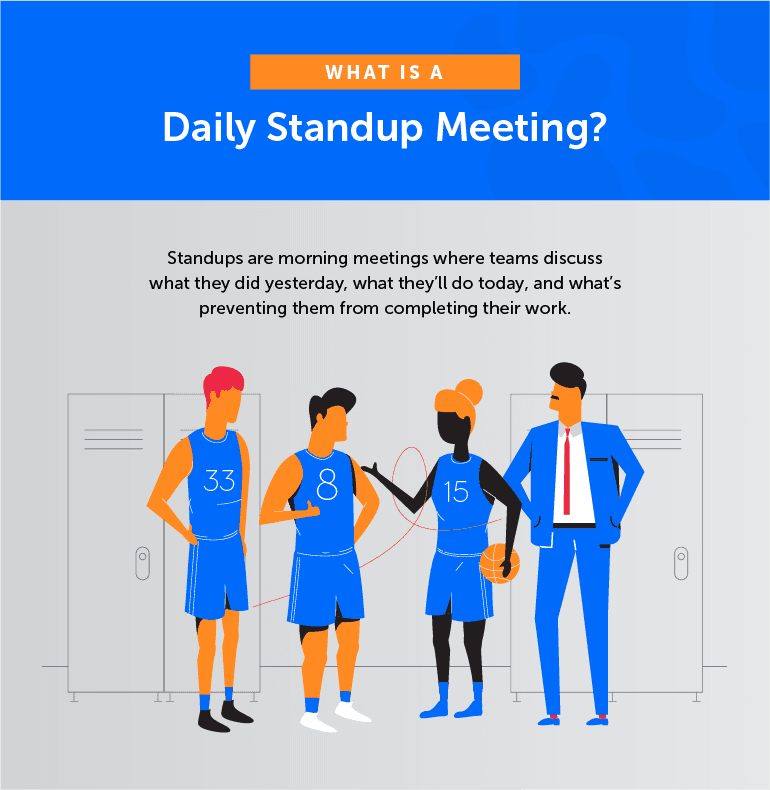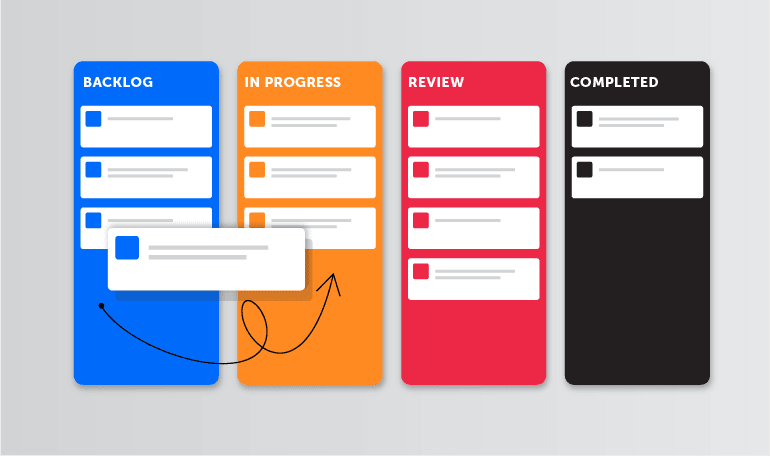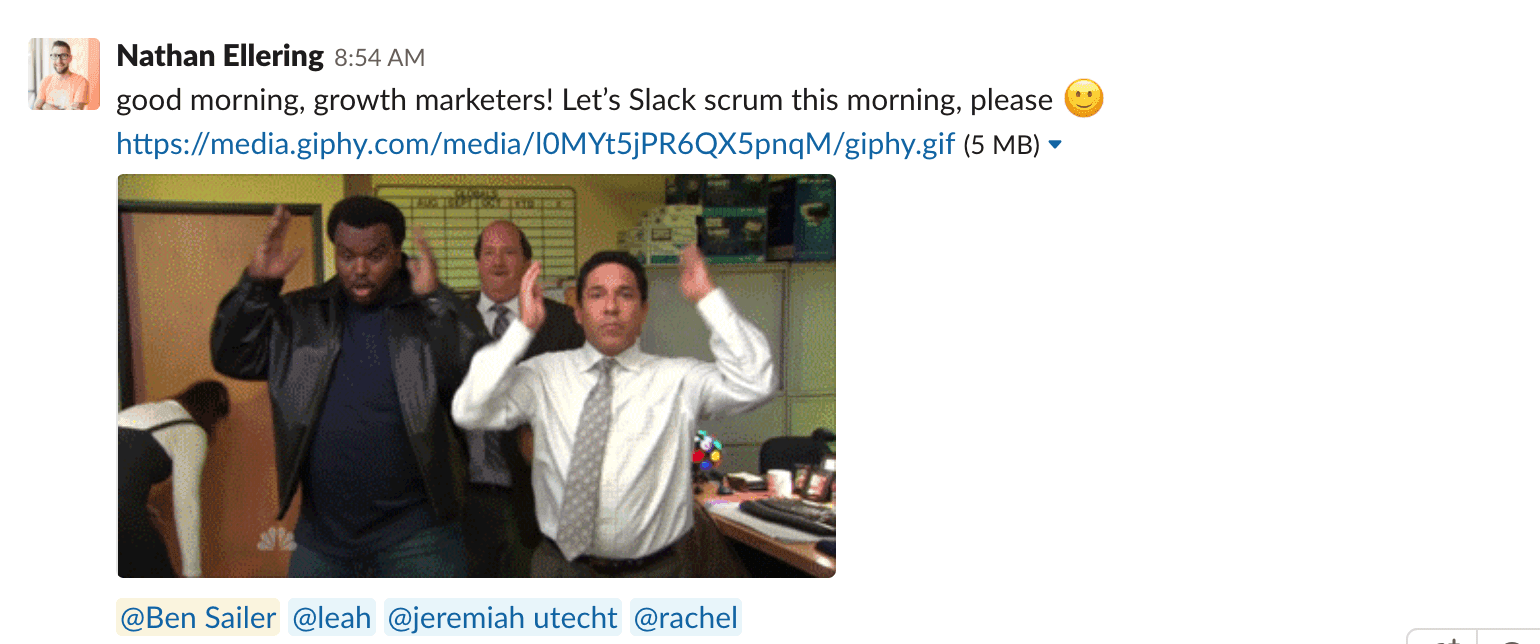Show of hands: who enjoys meetings? Odds are, not many hands would raise in response to that question. When meetings are poorly-run or scheduled without a good reason, they erode productivity and leave everyone feeling frustrated.
Fortunately, daily standup meetings aren’t like most meetings. Instead of wasting time or being added to your calendar unnecessarily (you know, those meetings that should have been an email), they’re short, to the point, and essential for effective teamwork.
Download: Daily Standup Template
This chapter includes an Excel template to help managers record responses for standups. It includes fields for each team member, what they did yesterday, and what they’ll do today. Here is a quick look:

You can get your copy below:
What Are Daily Standup Meetings?
Also referred to as “scrum meetings,” they are 15-minute syncs that take place every morning (usually right when people get to work, or shortly thereafter; after all, folks might need a moment to get their coffee first). In these meetings, each member of the team discusses:
- What they did yesterday: Summarize what they worked on and accomplished.
- What they will do today: What are their top tasks for the rest of the workday?
- What potential roadblocks might prevent success: If there is anything preventing work from getting completed, bring it up so it can get resolved.
The scrum master on your team should facilitate these meetings. Ideally, they should be held at the same time and in the same place every morning.

Why Do Standups Matter?
Daily standup meetings are an important part of the agile framework for marketers. They offer an opportunity each day to keep the team in the loop on what’s happening. Without them, you run the risk of having team members jump straight into their work without collaborating effectively.
Some other top reasons for running standups every day include:
- Keeping teams on the same page. Self-organizing teams require tight communication to run effectively.
- Facilitating proactive communication. By setting time aside at the start of the day to discuss what everyone is working on, you make sure this vital conversation doesn’t get ignored.
- Removing bottlenecks before they become problems. Stopping problems before they become liabilities for your productivity is important for making agile work.
Best of all, because these meetings are brief by design, they quickly and easily become an unobtrusive part of your day.
How Should Standups Be Run?
Running these meetings isn’t difficult nor complicated. However, it’s important to ensure they’re run properly in order to be effective. This section will outline a basic process for running them well and explain some best practices to follow for marketing applications.
Start With Your Active List
Every team member should maintain a list of projects and tasks they’ll be working on for the week. At CoSchedule, this is called an “active list.” They can be created in a multitude of ways according to what works best for each team member:
- Using the Team Management Dashboard in CoSchedule: This feature automatically organizes and displays all the tasks assigned to your team.
- Organized in Evernote, OneNote, or another note-taking app: These apps make it easy to store notes and lists for future reference. Evernote integrates with CoSchedule.
- In a word-processing document or plain text file: Simple and flexible.
If you’re interested in using CoSchedule for this, the video below explains how Team Management Dashboard works:
This feature offers the benefit of providing the whole team with transparency and clarity around who is working on what. Regardless of which tool or method you choose, the active list should simply include what you’re working on.
The Scrum Master Should Facilitate the Meeting
Whoever leads your scrums (usually a marketing manager, team lead, or project manager) should facilitate the meeting each day.
This means alerting the team when the meeting starts (in most offices, this likely means using Slack) and enforcing team member attendance (you can simply set the expectation that everyone will meet in the same place and time every day without being told).
The scrum master is also responsible for:
- Keeping the meeting on track: Make sure everyone speaks up and goes in turn.
- Making sure the right projects are being worked on. And if they’re not, redirecting the team toward the correct priority (according to the sprint).
- Ensuring everyone has what they need to succeed: If someone needs something to get their work done, help them get access or solve the problem.
Straightforward enough, right?
Determine Whether Standups Will Be In-Person or In-Slack
Most teams host standups in person, literally standing up (this is going to be a quick meeting, so no need to get too comfortable).
If your team is using a physical kanban board, you might hold daily standups in the same room as your board:

Alternately, you might pull open CoSchedule’s Kanban Project Dashboard (available on Professional and Enterprise Work Organizer and Marketing Suite plans—see details) or another app on a TV in the room. There are other kanban software tools on the market as well. Choose the approach the works best for you.
Traditionally, scrum meetings should be conducted in person. But, what if that doesn’t work for you (because you’re a remote team, or for another reason), or if you feel like breaking the rules? In that case, there’s another option: running standups in Slack.
The CoSchedule team has experimented with running standups in person and online. Both approaches have worked well.
If you choose to use Slack, start with having the scrum master alerting the team (use one specific channel for this each day):

Then, have everyone share what they did yesterday and will do today using the following syntax:
- Yesterday: [INSERT TASKS]
- Today: [INSERT TASKS]
- Blockers: [INSERT ISSUE]

If a team member has a roadblock, they tag the scrum master in a message. The scrum master is then responsible for helping the team member resolve the issue. This is often best done via face-to-face conversation.
This is one example of how processes can be tailored to what works best for you. Feel free to experiment and see what your team tends to prefer. What matters most may be consistency. Running standups needs to become a daily habit for it to stick.
That’s It!
The last point of the previous paragraph can’t be stressed enough. In order to make this process work, it’s important to be disciplined and to not skip days. Once you get into a groove though, you’ll start to reap the benefits of meeting with the team each and every day.

